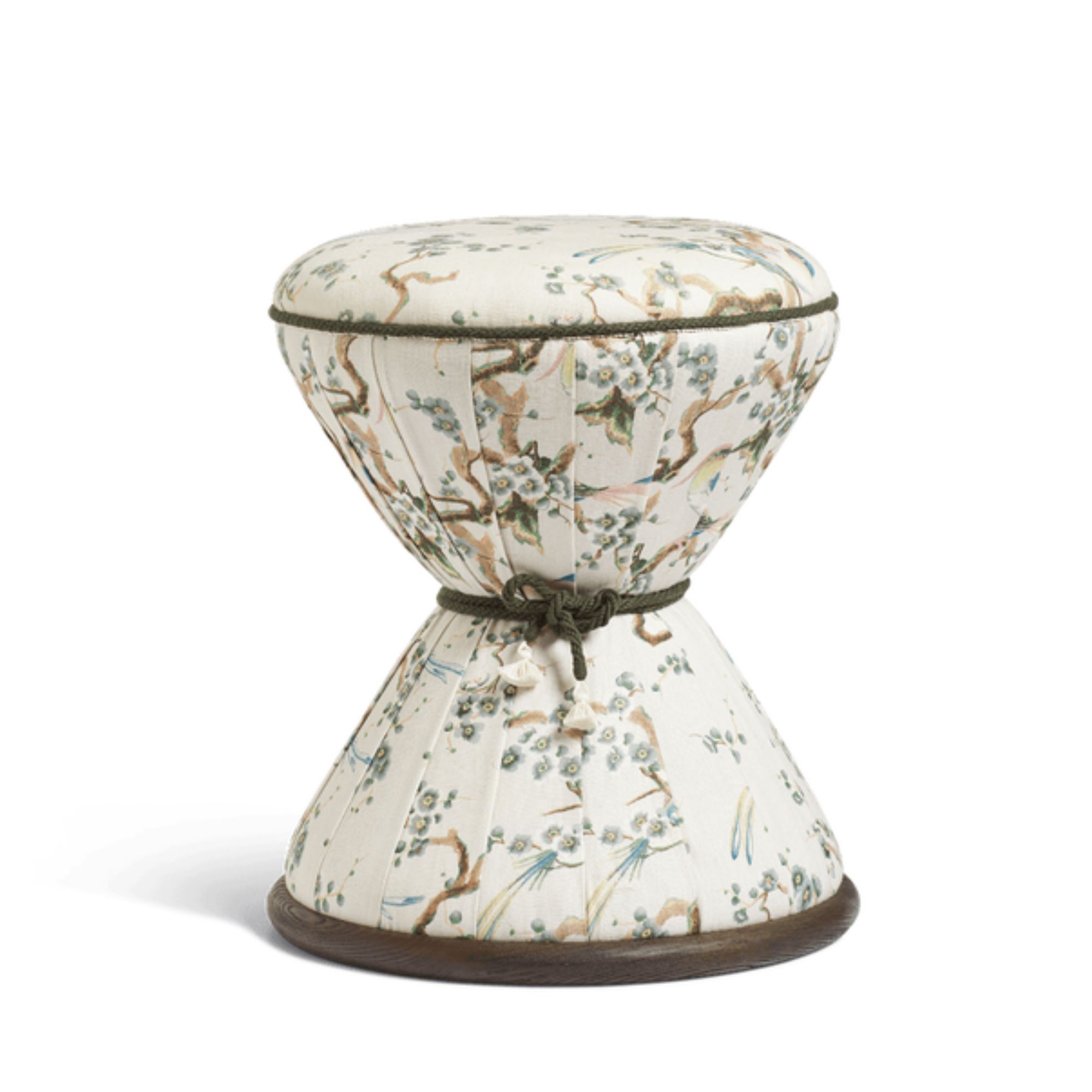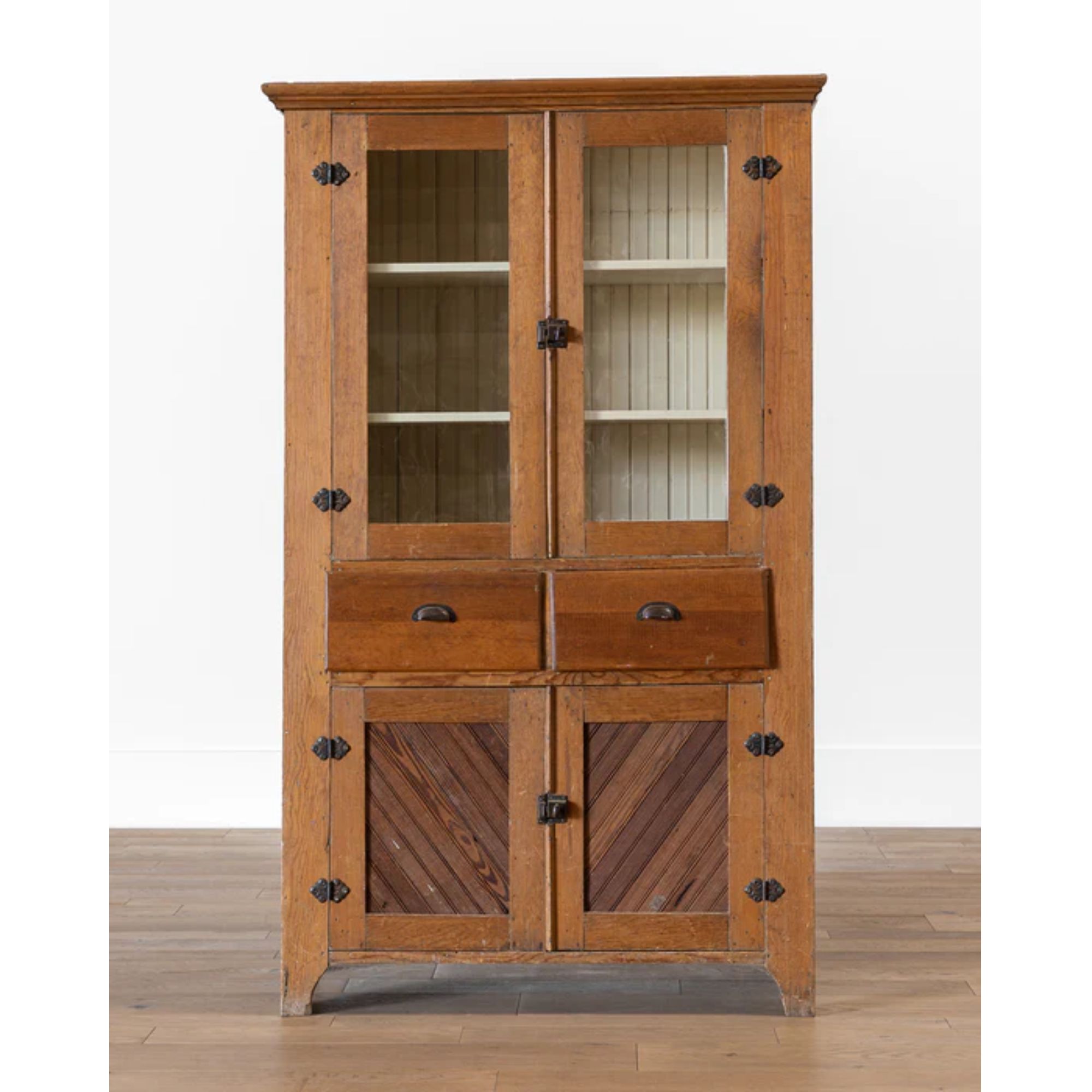Designers say we should all take these 7 lessons from European style for an eclectic take on luxury
The very best design cues interior designers are taking from across the pond, from color palettes to vintage charm
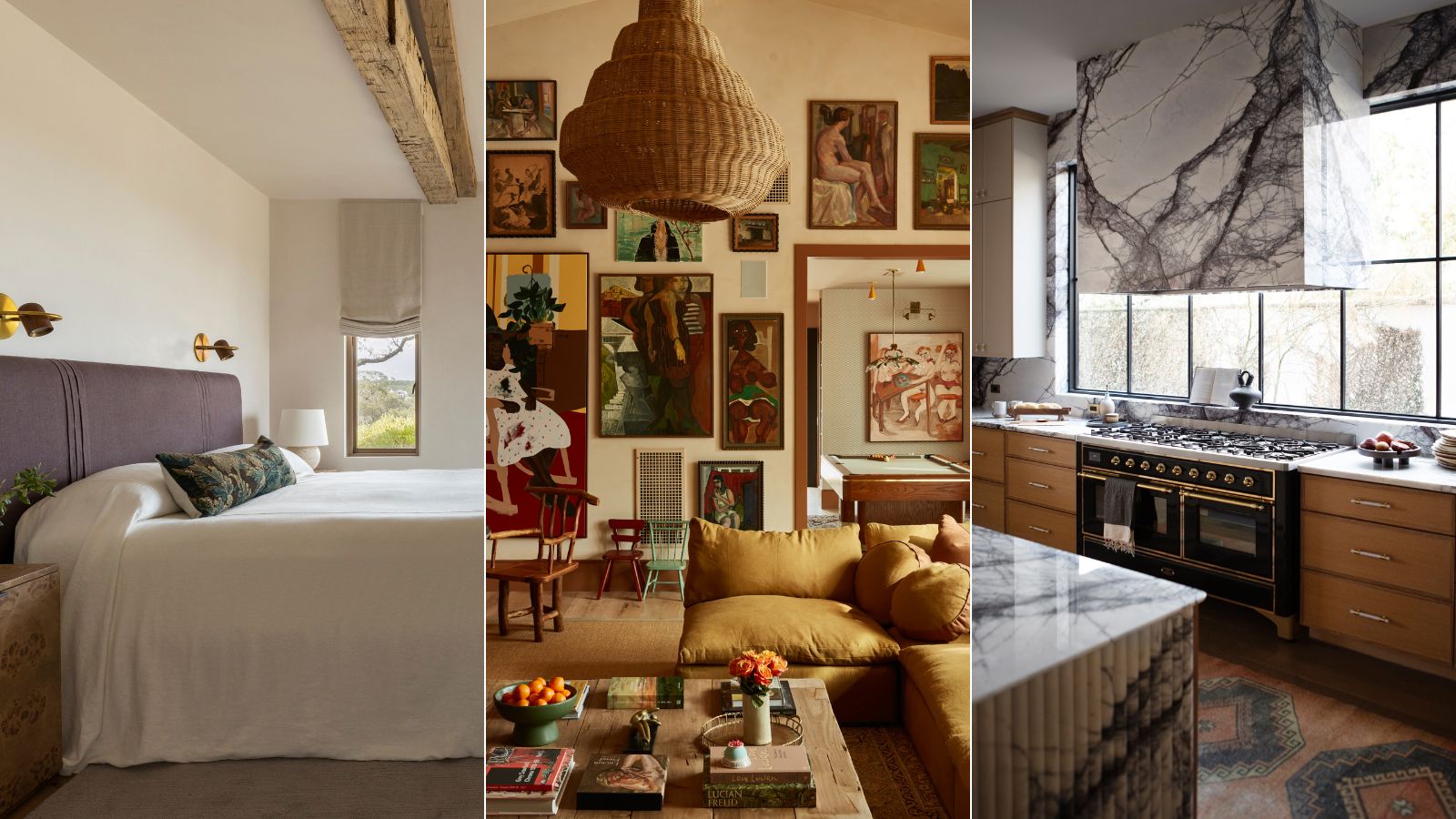

From Tuscan villas to sprawling French chateaus and bijou Parisian apartments, there's a lot to be said for European interior design. Long celebrated for its ability to blend tradition with enduring charm and elegance, there is certainly a thing or two to learn from its interior design style.
At the heart of European design is a commitment to history, craftsmanship, and the beauty of the natural world. From the ornate to the minimalist, European homes encompass a wide range of styles and influences to remain both timeless and incredibly stylish.
So, naturally, we sat down and asked interior designers to share their favorite ways they have been inspired by European design sensibilities and the secrets they take away and allow to shape some of their very best projects. Let's get into the 7 lessons designers take from European interiors.
7 lessons to take from European style
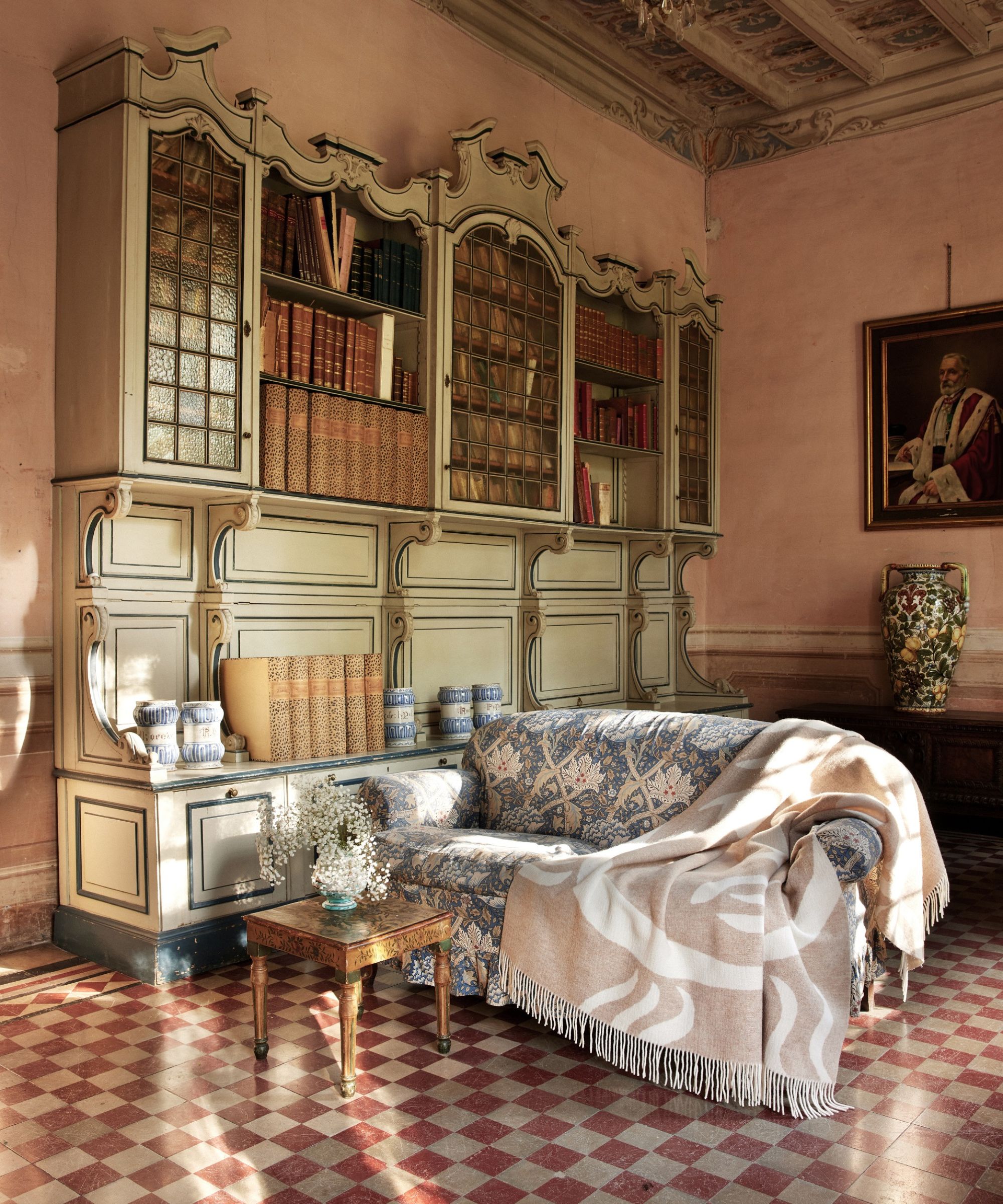
European design, of course, isn't focussed on just one region but instead overlaps multiple styles such as Italian, French, English, Scandinavian, and Spanish. Typically, you will find high ceilings with exposed beams, rustic flooring like stone or terracotta (often in a checkerboard pattern), plenty of wood tones, old-world art, and an appreciation for luxurious natural materials like marble.
If you want to introduce a touch of European romance and je ne sais quoi into your home, then read on for some ideas and lessons to help you infuse charm and elegance into your interiors.
1. An emphasis on craftsmanship
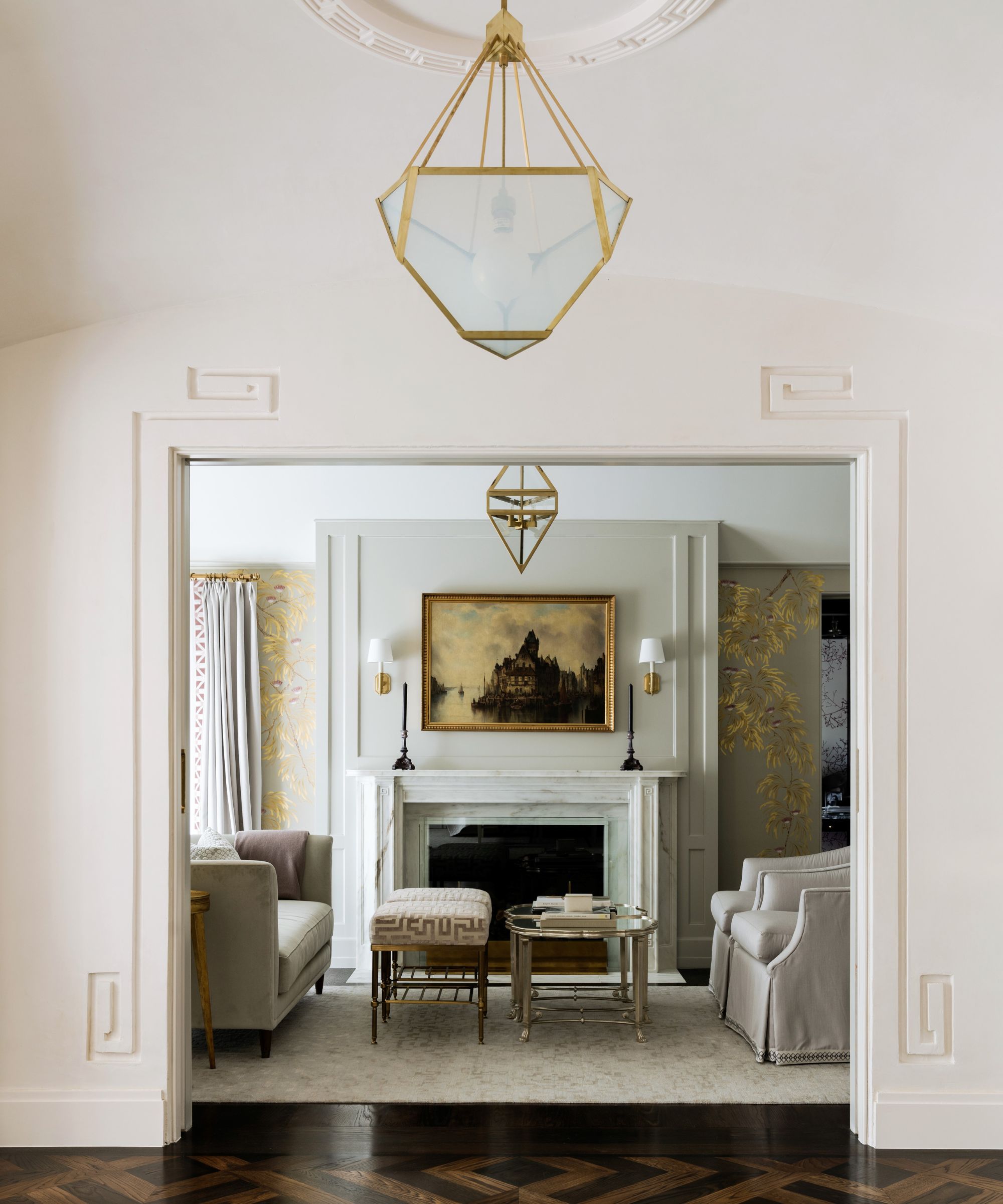
Craftsmanship is the backbone of European design. It's about more than just creating beautiful pieces; it's about preserving traditions and heritage. From hand-carved furniture to intricate moldings, the most continental-looking homes will showcase the artistry and skill of craftsmen who have honed their techniques over generations.
'One thing I love about European interiors is that you tend to see a lot less in the way of flash-in-the-pan-trends,' notes interior designer Kathy Kuo. 'There's a big emphasis on old-world craftsmanship and traditions, and therefore design motifs that really feel timeless.'
'I am a big proponent of investing in pieces that are well made from top-quality materials because you'll be able to use them for years and years,' she adds. 'This sentiment is definitely influenced by European design traditions.'
Incorporating elements of time-honored craft into your own home can be done by sourcing handmade furniture, investing in bespoke decor, or decorative elements like molding and wall finishes like Venetian plaster. It's this attention to detail that creates homes that never date.
2. Old-world and vintage art
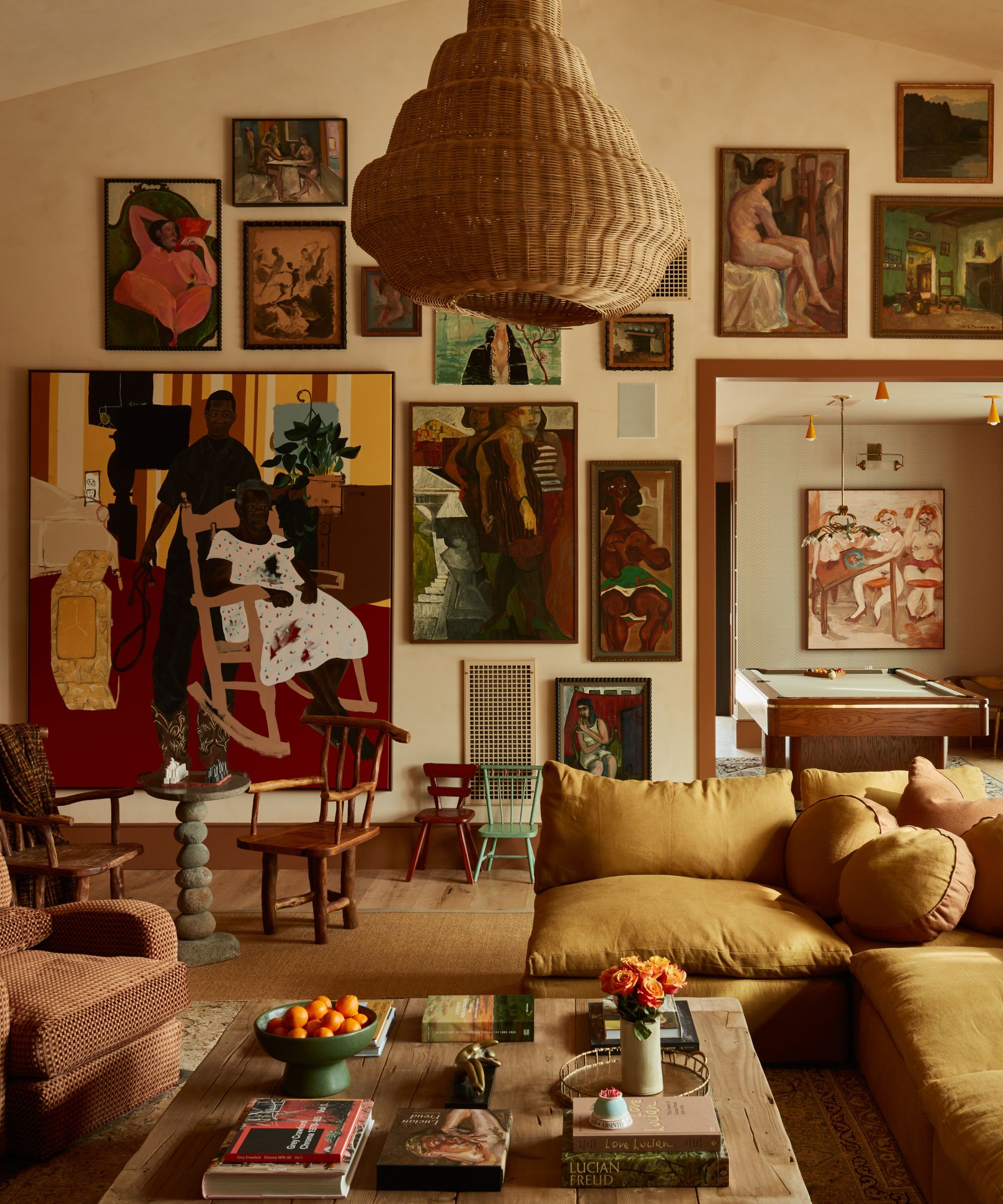
Whether it's a classic oil painting adorning the walls of a salon or a centuries-old tapestry gracing a grand hall, artwork plays an important role in European style.
Vintage art adds layers of depth and intrigue to a space. It transports you to different eras and cultures, fostering a sense of nostalgia and fascination. And, it can help to bring back memories of travels or family moments. European interiors often feature a mix of paintings, sculptures, and tapestries from various periods, creating a harmonious blend of past and present.
LA-based designers Emily Ward and Louisa Pierce, founders of Pierce & Ward, designed the living space above with a gallery wall inspired by European interiors. 'Our client loves art so we drew on some of our favorite large rooms in European homes that serve as galleries and showcase lifetimes of collected mementos. We kept a level of sophistication with Jay Spectre steamer chairs covered in velvet checks but honored the home's beachside location with a high-performance linen sofa, quirky primitive wooden chairs, and a game table made of river rocks.'
Start by exploring local antique shops, auctions, and online marketplaces. Look for pieces that resonate with your personal style and complement your existing decor. Don't be afraid to mix different art styles and eras to create a curated, eclectic look.
3. Eclectic mix of old and new
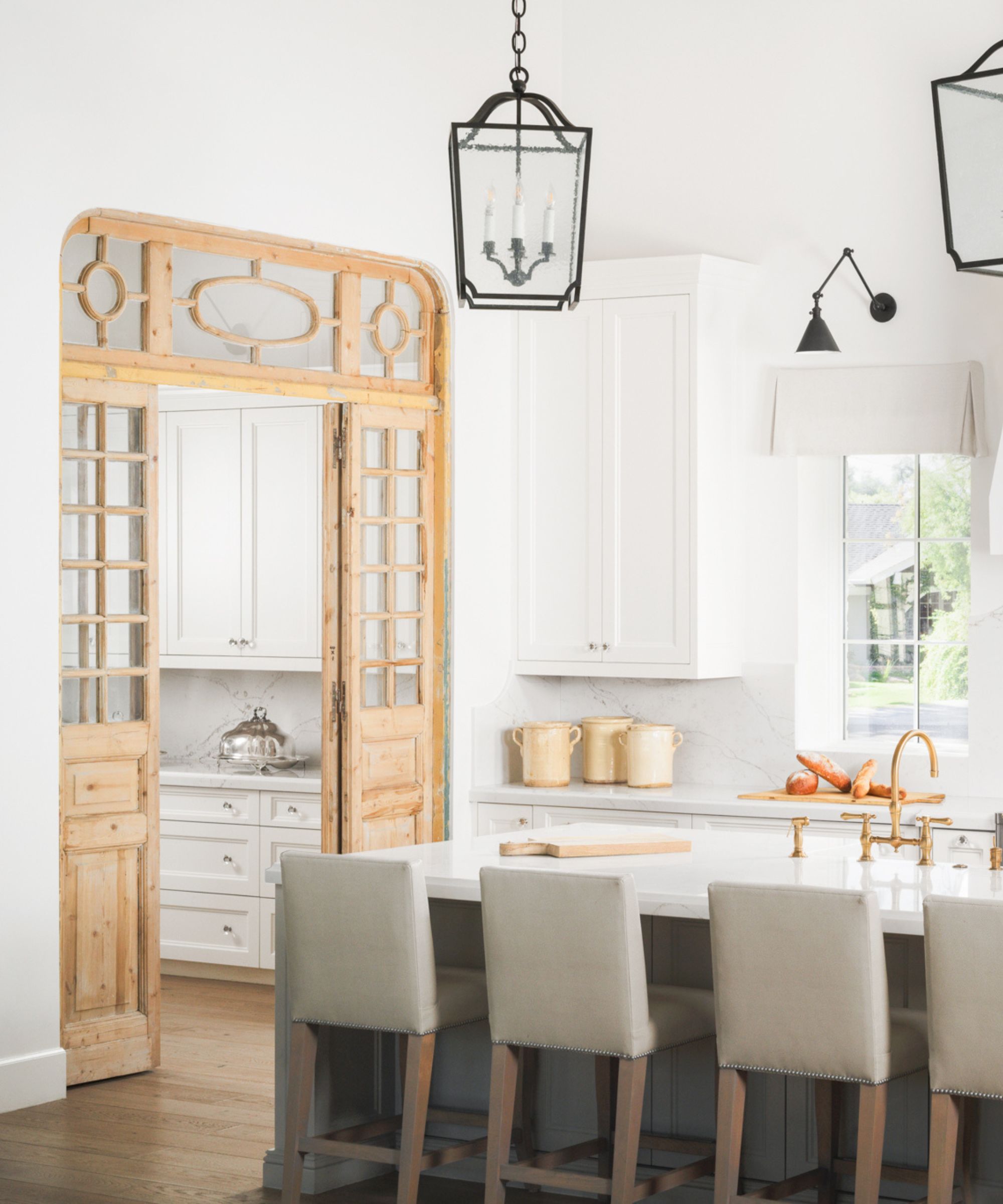
European homes effortlessly marry the past with the present to create transitional design spaces that feel both timeless and fresh. By introducing a mix of old and new into your interiors, you can create spaces that are rich in character, history, and personality.
Dana Lyon, principal designer at The Refined Group, used antique and vintage pieces to create a French country kitchen style in this timeless white shaker kitchen.
'The brass details in this kitchen combined with the black detail in the lights are a great example of mixing metals to give a French feeling in this kitchen,' says Dana. 'The marble backsplash and accessories are all French and give this pantry authenticity, while the set of antique doors make the entrance to the pantry feel historic and oh so French!'
A considered mix of antique furnishings, vintage textiles, art, and decor juxtaposed with more contemporary fixtures and fittings will help you combine style with functionality. Vintage or vintage-inspired lighting and accessories will always add European flavor to a scheme, resulting in spaces that feel curated and lived-in.
4. Living finishes
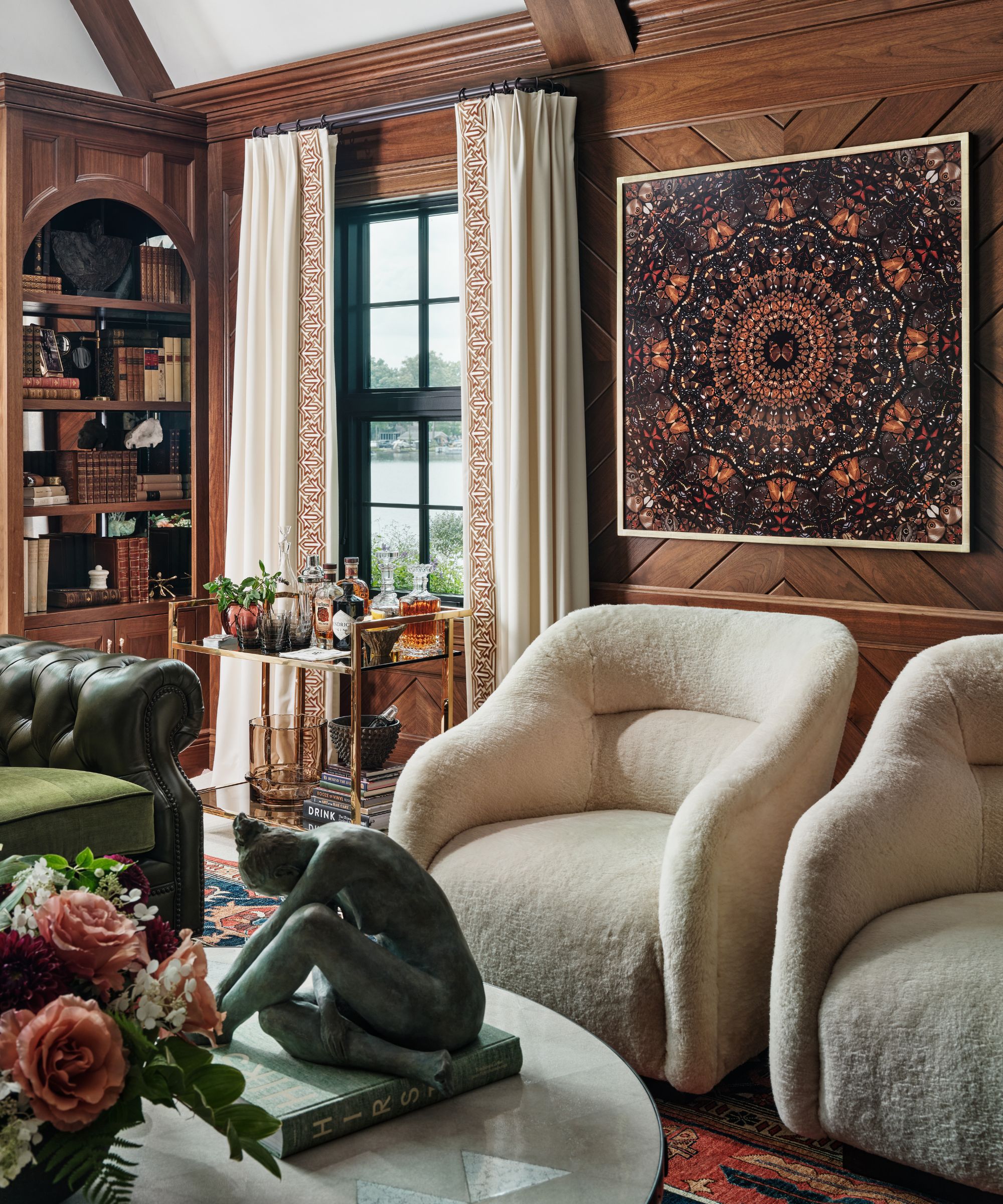
Unlike traditional finishes that remain static over time, living finishes evolve and develop a natural patina with use and age, reflecting the life and history of the materials they adorn. From aged metals to natural stone, these finishes lend a sense of warmth and character to European interiors.
'If you’re looking to draw inspiration from European interiors, aim to embrace a European mindset through living finishes with a sense of grounded nature,' suggests Tanner Morgan of Morgan Madison Design. 'When we think of European interiors, we think of history that you can feel emanating from the walls of the space. Painterly palettes, aged finishes, curated simplicity, and layered sophistication that feel effortlessly refined all contribute to the essence of a European aesthetic.'
'We try to incorporate these details through marble floor tiles, Venetian plaster on walls, and living metal finishes such as unlacquered brass or copper that evolve with time,' says Morgan. 'Consider using textiles that “live” in an imperfect way. For example, a silk velvet that shows flashing or flattening with use or tapestry-like fabrics imbued with an antique charm offers a beautiful synergy when juxtaposed against modern forms.'
5. Serene color palette
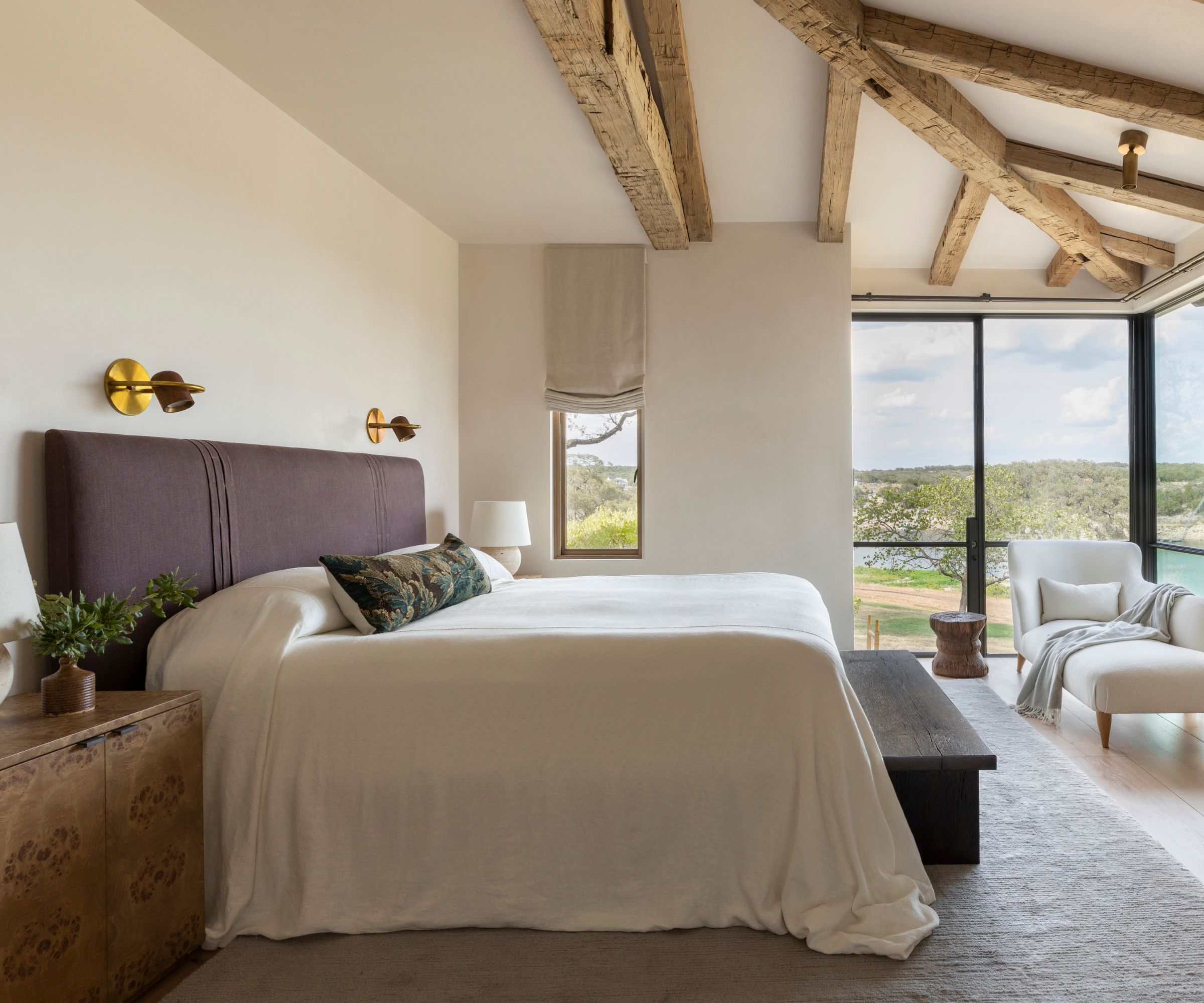
Most European style is focused on subtlety. Using a soft color palette, neutral walls, and furnishings helps to exude an air of comfort compared to bright hues that are sometimes too overwhelming to the eye.
The color palette sets the tone for the entire home. In European interiors, soft, muted tones such as pale blues, earthy greens, and warm neutrals dominate. Rather than focusing on more fleeting color trends, these colors reflect the natural beauty of the European landscape, bringing a sense of calm and serenity into the home.
'As a designer, I frequently draw inspiration from European styles, particularly Belgian influences, when designing for clients' homes,' says renowned designer Marie Flanigan. 'Belgian interiors seamlessly combine elegance, simplicity, and natural materials like weathered wood, stone, wool, and linen, resulting in a charmingly and somewhat rustic ambiance.'
'Adding touches of unlacquered brass or polished nickel in light fixtures, decor, and hardware also enhances the luxury of these spaces. By carefully layering textures, silhouettes, and finishes, with a muted color palette, the spaces feel like a timeless European home,' suggests Marie.
6. A touch of luxury
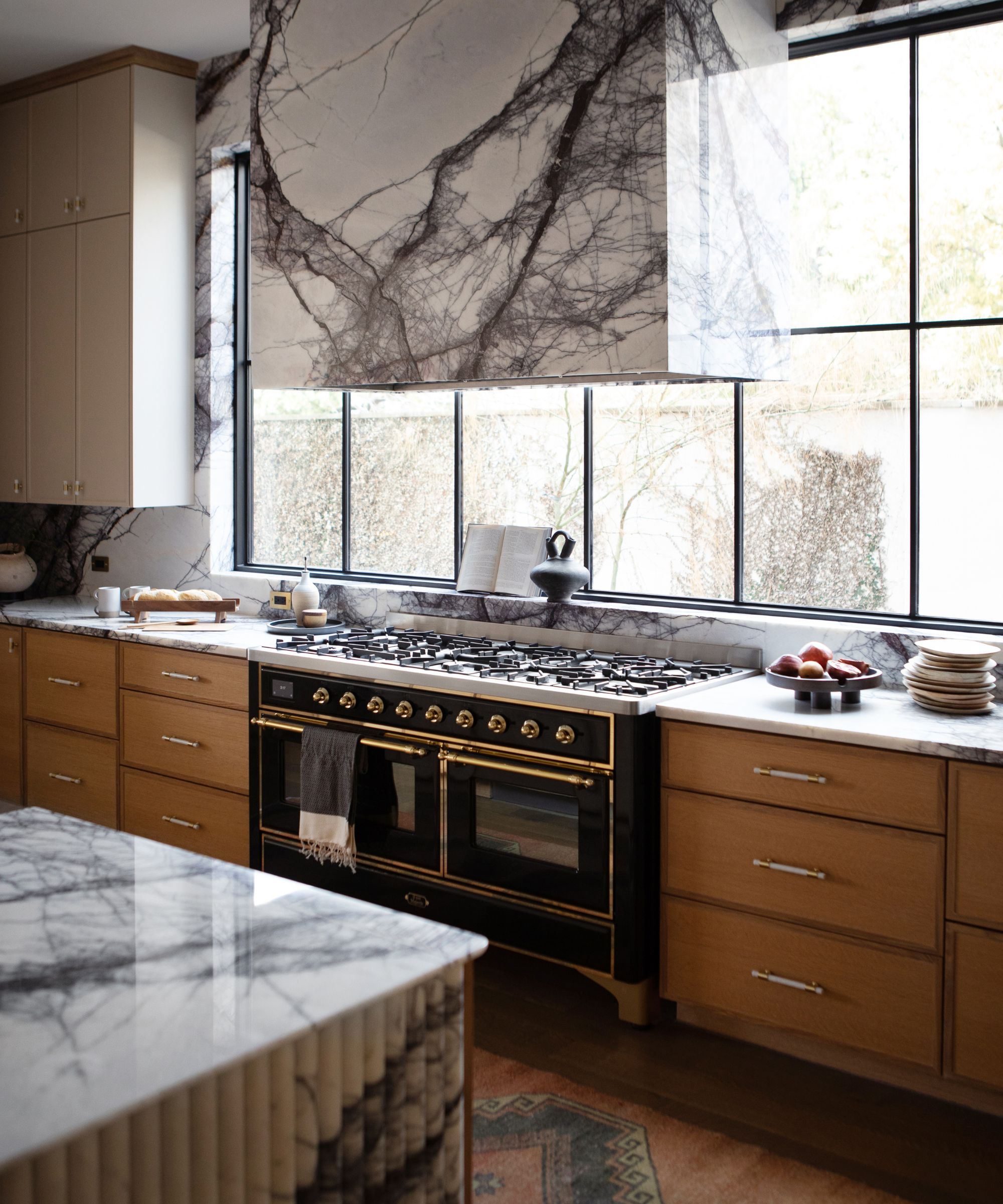
From sumptuous fabrics to gilded accents, European interiors exude a sense of grandeur and extravagance that no other region quite manages.
Luxury is all about attention to detail and good craftsmanship. European homes feature meticulously crafted furnishings and decorative elements that exude elegance. From slabs of marble to custom-designed fixtures, every element is carefully curated to create a sense of exclusivity. But the key lies in not over doing it.
'There is a certain effortless feeling to European interiors that comes from pushing oneself to approach design from a playful or casual place,' adds Tanner Morgan. 'Whether it’s introducing a vibrant green sofa into a room without similar hues or showcasing a Portuguese sculpture under a console, don’t be afraid to embrace the effortless.'
Focus on quality over quantity and invest in key pieces that will stand the test of time. Consider incorporating luxurious materials like marble, velvet, and brass into your design scheme, and be sure to mix and match different textures and finishes to create a layered scheme. Remember that luxury is as much about the feeling of the space as it is about the aesthetics, so prioritize comfort in all your design choices.
7. Bring the outside in
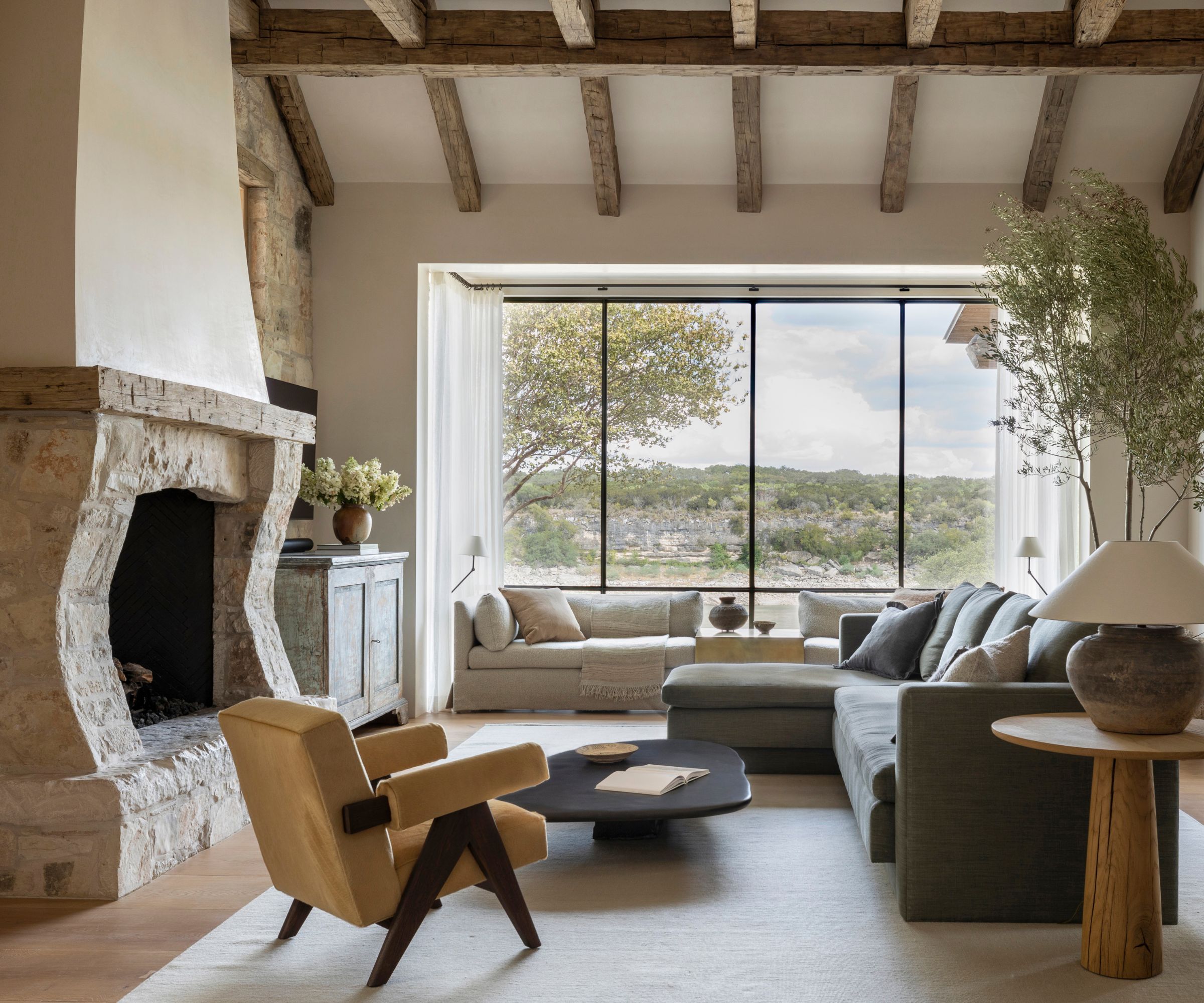
European interiors often feature indoor gardens, living walls, and water features that bring a sense of calm and serenity into the home. By integrating elements of nature into our living environments, we can create spaces that feel rejuvenating and revitalizing.
'Injecting a feeling of history into a home and landscape goes hand in hand with creating a European-feeling environment,' says Tanner Morgan. 'Be cognizant of treating interior spaces as extensions of the exterior of a home. By utilizing materials like stone and wood, you blur the boundaries between indoors and outdoors, fostering a seamless flow between living spaces. Antique olive jars and aged copper gas lanterns lend a romantic aura, evoking a Dickensian charm that transports you to a bygone era.'
In European interiors, we often see large windows that frame picturesque views of gardens, courtyards, or landscapes, allowing natural light to flood the space and creating a sense of biophilic design. Additionally, the use of natural materials like wood, stone, and rattan helps to create a warm and inviting atmosphere that evokes the feeling of being outdoors.
There's a European aesthetic to suit every taste and preference. By incorporating elements of European design into your own home, you can create spaces that not only reflect your personal style and sensibilities but also evoke a sense of rich history, culture, and sophistication.
Sign up to the Homes & Gardens newsletter
Design expertise in your inbox – from inspiring decorating ideas and beautiful celebrity homes to practical gardening advice and shopping round-ups.

Charlotte is the style and trends editor at Homes and Gardens and has been with the team since Christmas 2023. Following a 5 year career in Fashion, she has worked at many women's glossy magazines including Grazia, Stylist, and Hello!, and as Interiors Editor for British heritage department store Liberty. Her role at H&G fuses her love of style with her passion for interior design, and she is currently undergoing her second home renovation - you can follow her journey over on @olbyhome
-
 Extend the lifespan of your appliance with 5 simple but crucial washing machine maintenance tips
Extend the lifespan of your appliance with 5 simple but crucial washing machine maintenance tipsFrom cleaning the filters to keeping the door open, experts reveal the washer tips they swear by
By Andy van Terheyden Published
-
 These are the 6 must-have colors to decorate with in April 2025
These are the 6 must-have colors to decorate with in April 2025What do retro-inspired yellows and beautiful blues all have in common? They're on our hot list for the season ahead
By Sophia Pouget de St Victor Published
